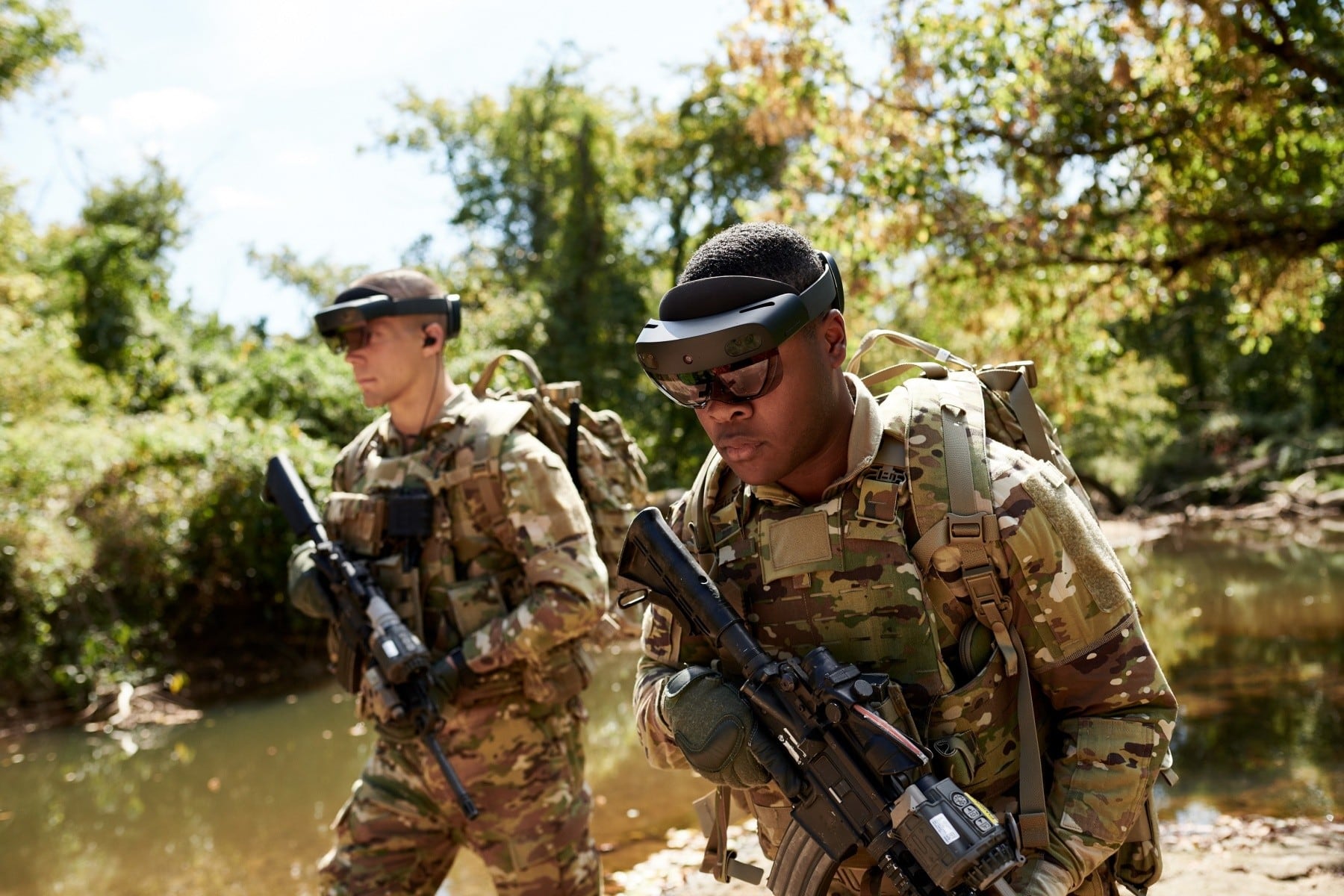The Army still plans to equip its first units with the Integrated Visual Augmentation System toward the end of next year, but it could require putting some soldiers into two-week quarantines to get the prerequisite testing done this fall.
The goal is to equip the first units with IVAS goggles — which combine night vision, a rifle-linked targeting scope and navigational markers within a soldier’s field of view — in the final quarter of fiscal year 2021. To do that, the Army still needs to complete its third and fourth “soldier touch points,” which provide developers with feedback from troops.
The third soldier touch point was originally planned for late July, but the coronavirus pandemic derailed it. Now, the Army is aiming for soldiers to test out the IVAS goggles at Fort Pickett, in Virginia, in late October and early November.
Experts have warned that a second wave of the pandemic could come in the fall, but Army leaders said that the third soldier touchpoint is a critical stage, particularly when it comes to field testing IVAS goggle software at the company level.
“What we’d have to do, if that were the case, when that time came we’d have to sit down and make an evaluation," said Brig. Gen. Tony Potts, who directs the modernization of infantry equipment.
The first touch point tested IVAS goggles at the squad level, the second at the platoon level, the third will be at the company level and the fourth is planned at the battalion level. The third test will include 72-hour operations. It will potentially use paratroopers from the 82nd Airborne Division for the test, but that hasn’t yet been set in stone.
The good news, said Potts, is that a lot of the testing for the third soldier touch point can be done remotely, but "the challenge would be demonstrating that in an operationally relevant environment,” he added. That requires some field work.
There are other options that the Army is already practicing to keep training ongoing across various schoolhouses, noted Brig. Gen. Dave Hodne, the Army’s chief of infantry who has a major role in testing the new technology.
“It would come at a cost of a two-week isolation period in advance of beginning the test,” said Hodne, adding that students trying to vie for a Ranger tab at the moment are already doing two-week isolation periods.
Because isolation couldn’t be guaranteed, some training courses have been halted at Honde’s home station of Fort Benning, Georgia, but many others have actually continued.
“We’ve got 8,000 infantry trainees on Sand Hill who are executing a 22-week one-station unit training, you got an Airborne class that just graduated on Wednesday jumping out of airplanes,” Honde said. “The Army has frameworks for operating in biological hazards. It just requires us to make adjustments.”
The other potential problem deals with the global supply-chain disruption in the wake of the coronavirus pandemic, according to Potts. IVAS goggles grew from Microsoft’s Hololens program, and that company has had to “regather the supply chain and move it” to keep pace with the fiscal 2021 timeline, Potts said.
“Our Microsoft partners have been outstanding in reforming the supply chain where necessary and continuing on with the development in their production and manufacturing facility in California,” he said.
Kyle Rempfer was an editor and reporter who has covered combat operations, criminal cases, foreign military assistance and training accidents. Before entering journalism, Kyle served in U.S. Air Force Special Tactics and deployed in 2014 to Paktika Province, Afghanistan, and Baghdad, Iraq.
